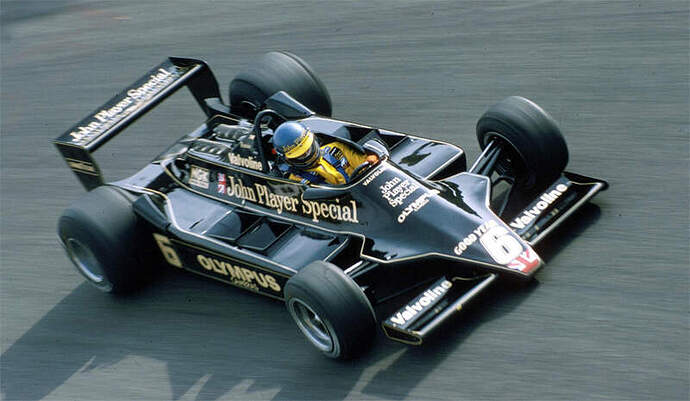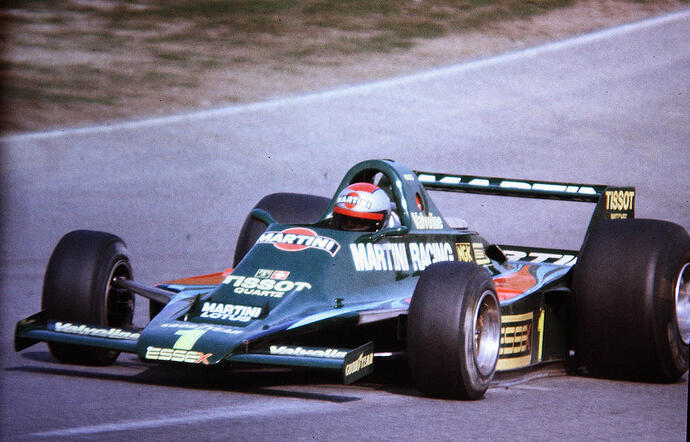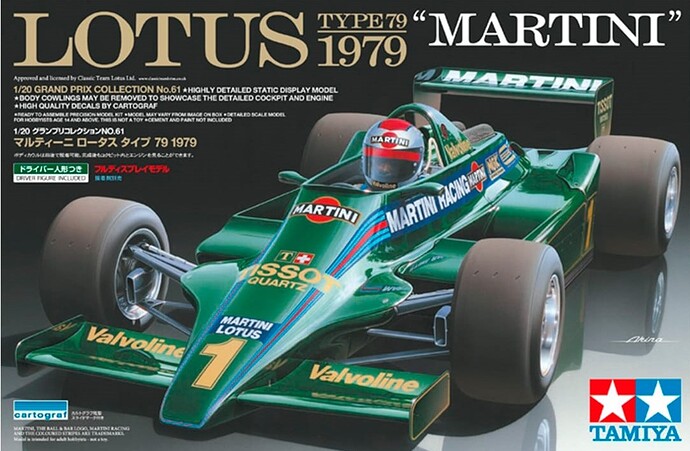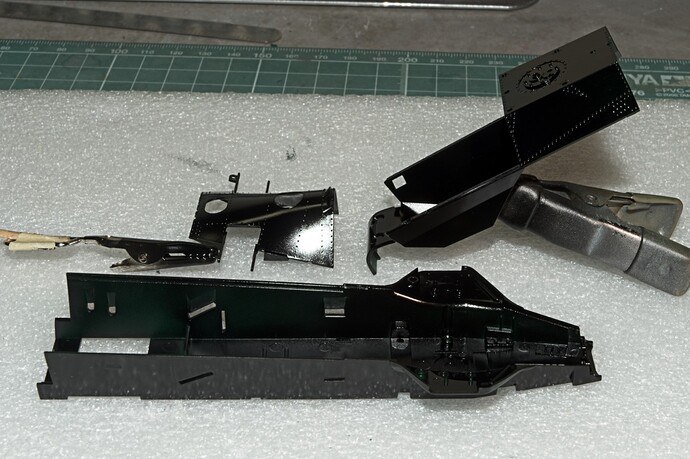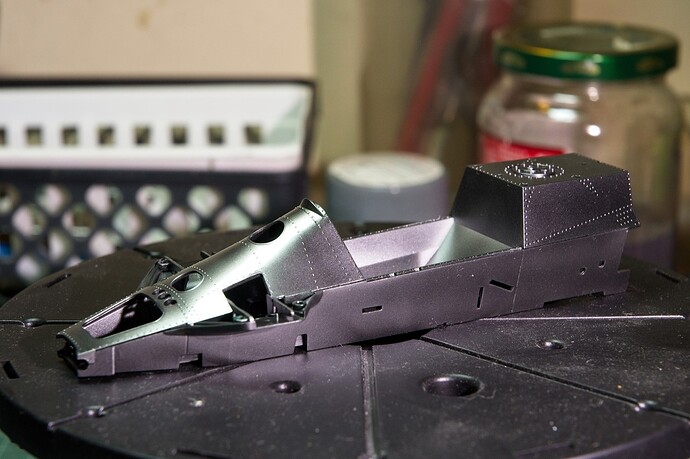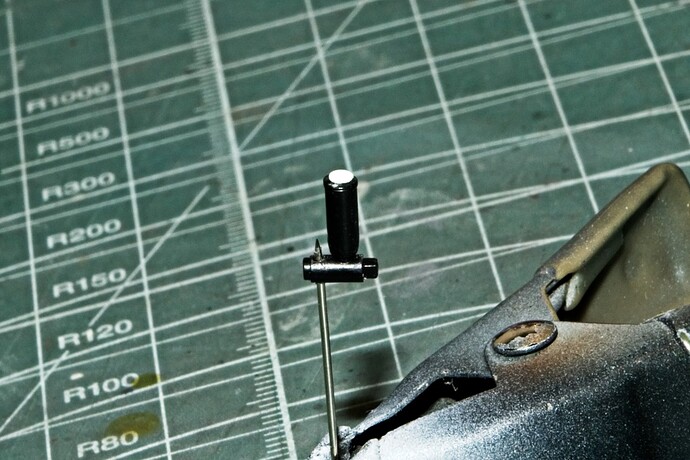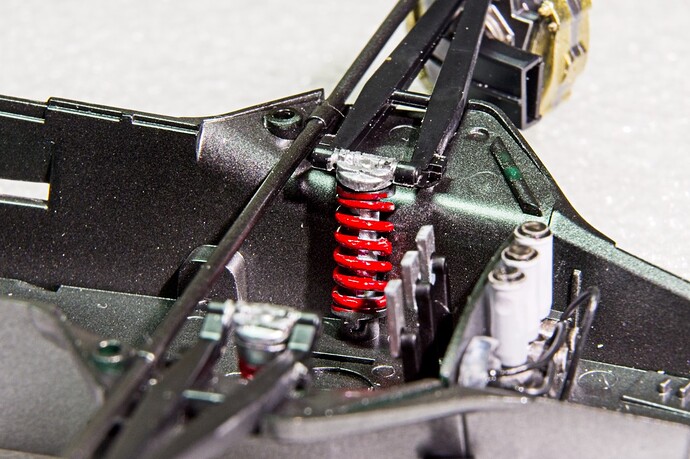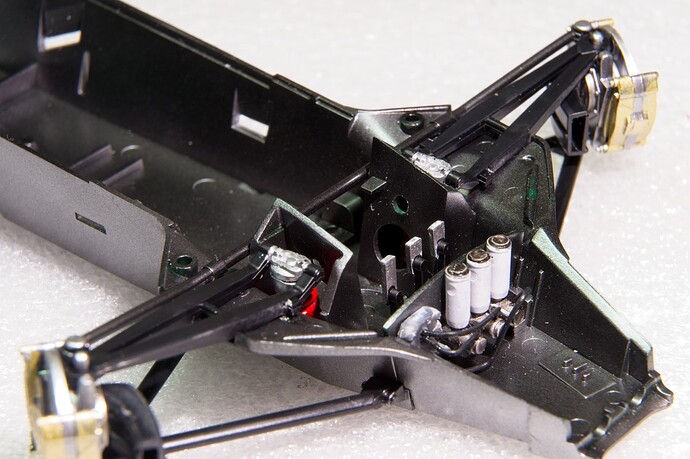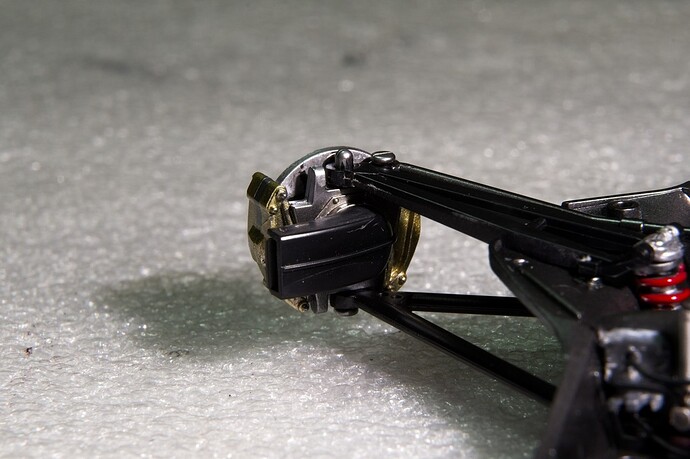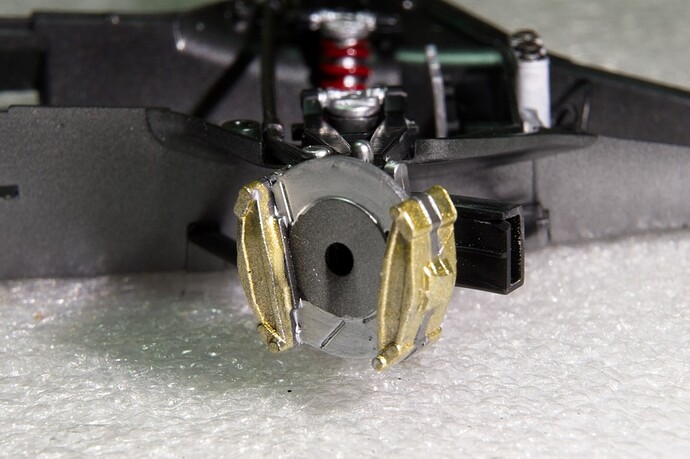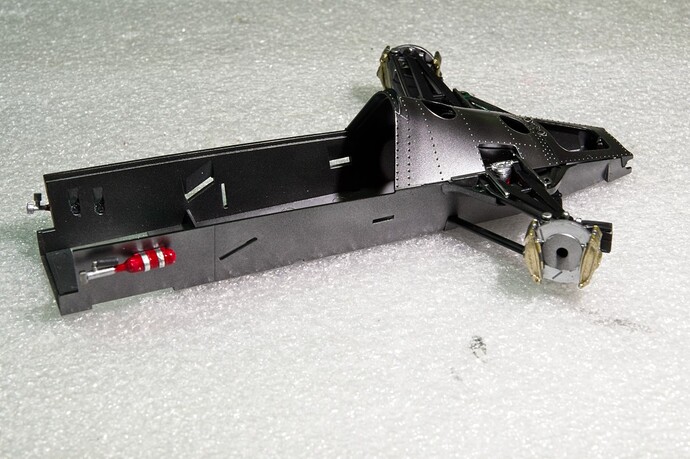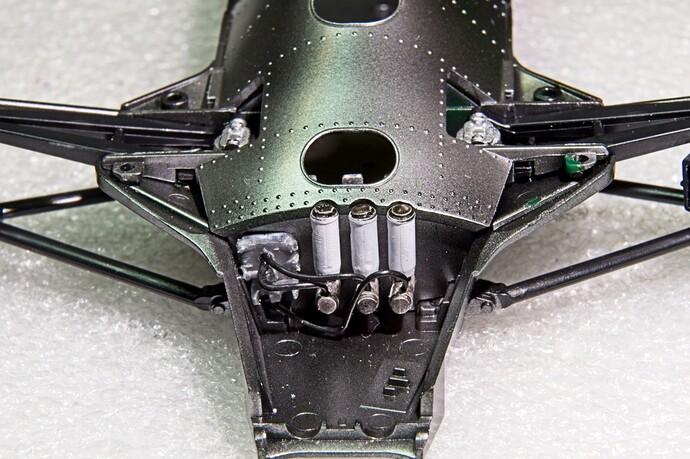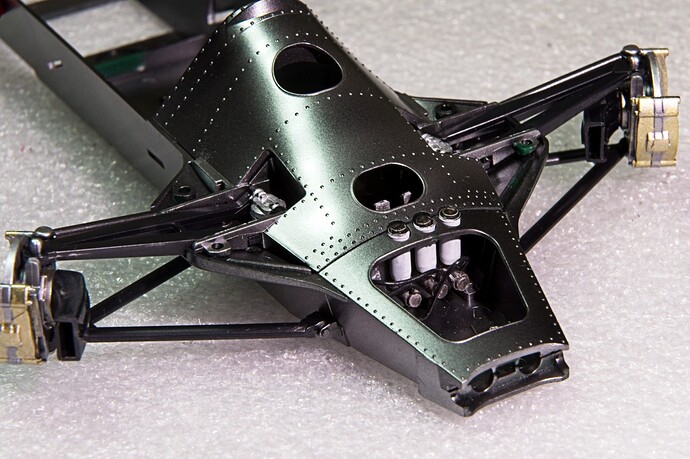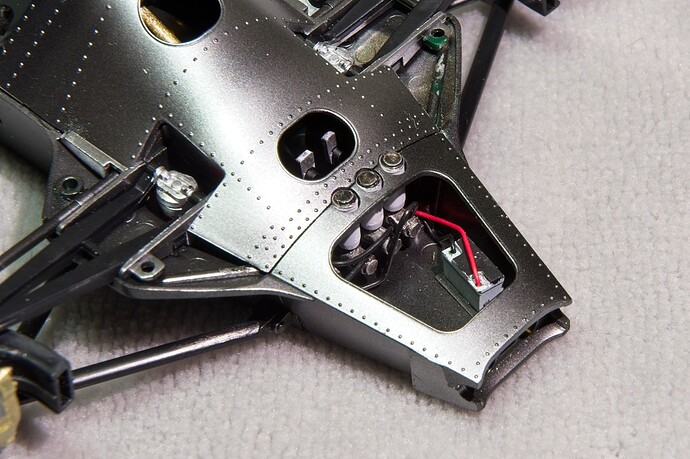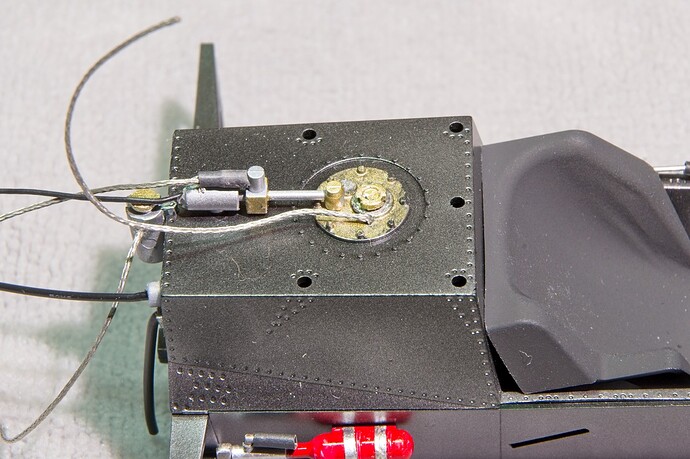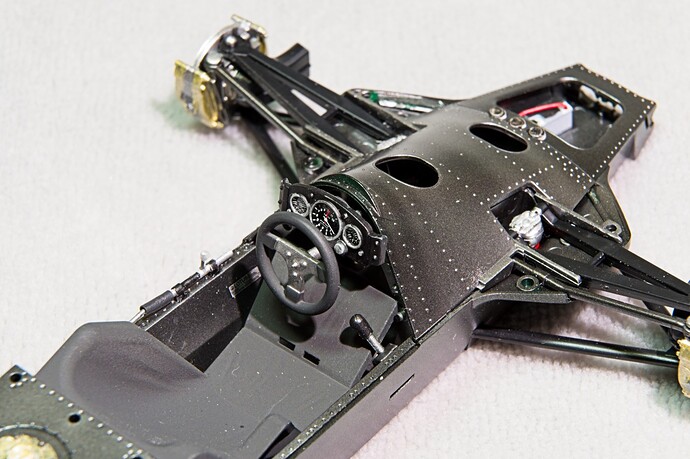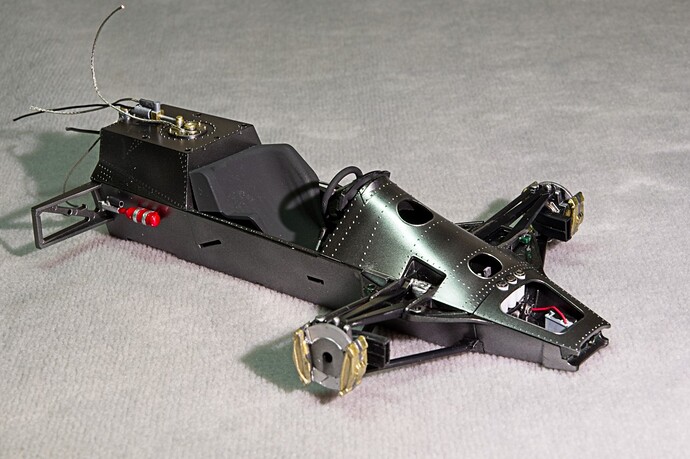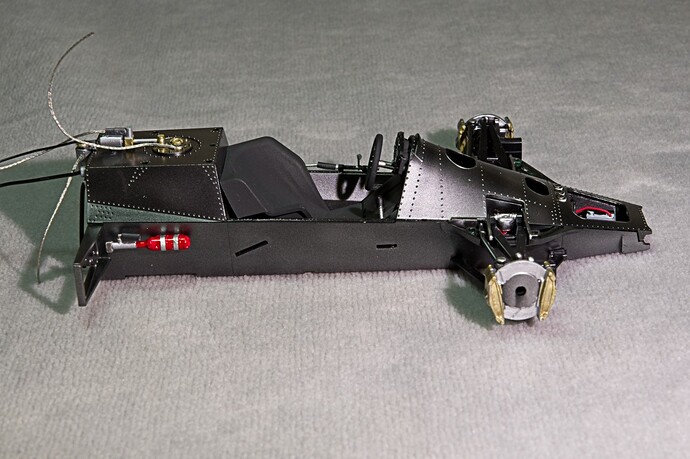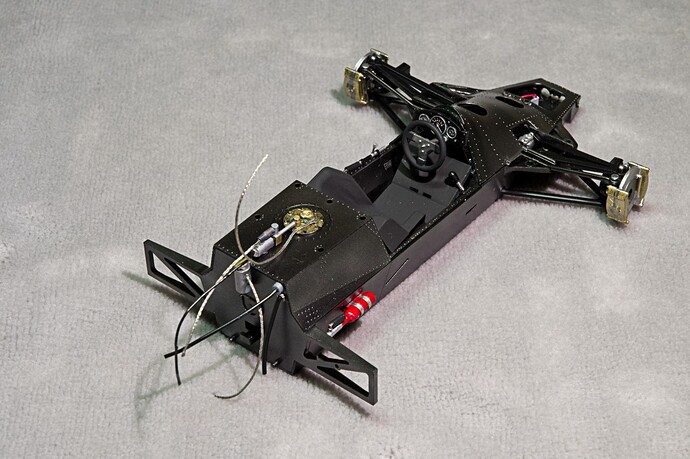Tamiya has kitted both the 1978 Lotus type 79 as well as the 1979 Type 79 that had a change of sponsorship from the Black and Gold colors of John Player Special & Olympus Cameras.
to the Martini Sponsored 1979 type 79 in BRG
The 1978 car revolutionized F1 racing with the 1st true use of ground effects that was a full year ahead of any other team. The result was that Mario Andretti won the driver’s championship with his teammate Ronnie Peterson placing 2nd. While Lotus won the Manufacture’s Championship. The car was truly way ahead of the rest of the field.
For the 1979 season Lotus was working on even a better ground effects car: the type 80 but it wasn’t ready for the start of the season, so Lotus simply used the 1978 cars which was a common practice back in that era. Unfortunately the other teams had made great gains in ground effects, and the type 79 wasn’t even able to compete as a front running car till the type 80 finally made it to the grid.
Tamiya pulled out all the stops with this kit as it captured the complex body work both top and bottom.
What’s more the decal sheet has been printed by Cartograf which took me for a surprise. My kit was molded in 2006 so the decals are 15 years old, and the kit was purchased off of ebay a while ago already opened. As an alternate to the kit decals I bought the AM decals from Indy Cal. Right now I’m not sure which way I’ll end up going.
the Body is quite complex and is comprised of almost 30 pieces and is built around the aluminum monocoque chassis. So unlike nearly all of my previous builds, I can’t start with the body right through painting, decaling, and polishing. Work this time starts with the monocoque chassis.
I prepared for painting the 1st 6 steps in the instructions to build the monocoque chassis including the front suspension. Any parts that need to be Aluminum was AB’d Tamiya X-1 Gloss Black. I don’t prime under it as the primer adds texture to the Gloss Black and that’s exactly what I don’t want. Here’s the main sections after the Gloss Black has been applied.
I gave the Gloss Black a few days to cure, then I air brushed on Alcad2 101 Aluminum.
The 4 main sections are just dry fitted at this point. the front section will contain the small battery and leds as well as the 3 Master Cylinders with lines.
And speaking of the Master Cylinders here’s one with a pin through the holes drilled for the lines as well as new tops for the caps.
joel
